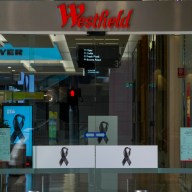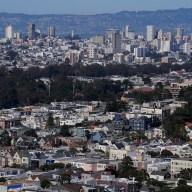 A study ranked the best and worst subway lines for wireless coverage.
A study ranked the best and worst subway lines for wireless coverage.
Credit: Stan Honda/AFP/Getty Images
New York City’s subways are still wireless dead zones, a new study found.
As the Metropolitan Transportation Authority moves to improve reception on subway platforms, cell phone coverage is still lacking underground, according to a study by benchmarking firm Global Wireless Solutions, Inc.
Engineers with the firm performed mobile benchmarking tests while riding 12 subway routes in Manhattan over three days in early May. Performance was measured on four carriers — AT&T, Sprint, T-Mobile and Verizon — and averaged for each of the lines.
Only two lines had data network access with more than an average 50 percent success rate: the 7 train between Times Square and Grand Central, at 74 percent, and the E train between 50th Street to Lexington Ave/53rd Street, at 52 percent. The “worst” line for coverage, according to the firm, was the F train from Lafayette Street to East Broadway, at an 8 percent success rate.
Global Wireless SolutionsCEO Paul Carter said the poor results weren’t surprising, but that straphangers are eager for better cell service underground.
“We expect it everywhere now,” he said.
MTA spokesman Adam Lisberg said the survey is misleading — in no small part because the century-old subway tunnels have never been wired for subway service.
“This alleged study by an out-of-state company is flawed from the get-go,” Lisberg said. “They tried to measure cell service in subway stations that aren’t wired for cell service — this is like trying to measure the strength of sunscreen at midnight.”
Simply put: “You can’t use your phone underground because you’re underground,” Lisberg said.
Carter acknowledged that cell reception is spotty or nonexistent on subway trains because most underground platforms aren’t wired for coverage. But the MTA is working to change that.
So far, Transit Wireless has outfitted 47 stations for WiFi and cell service.
“What Transit Wireless is doing is installing antennas for phone and WiFi service inside the stations, which is incredibly complicated,” Lisberg said. “It would be even harder to install it in the tunnels — especially since the tunnels are in use around the clock.”
Transit Wireless hopes to have all 277 underground stations connected by 2017. Until then, Global Wireless Solutions will likely conduct more surveys.
“The point is to understand where it is today — which lines improve and which stay the same by 2017,” Carter said.
Mobile data performance on subways in Manhattan, from best to worst:
The rankings were determined by averaging success rates of uploads and downloads from network benchmark tests completed by Global Wireless Solutions along Manhattan subway routes.
1. 7 train (Times Square to Grand Central) – 74 percent success rate
2. E train (50th Street to Lexington Ave/53rd Street) – 52 percent success rate
3. 6 train (28th St. to Grand Central) – 35 percent success rate
4. B, D trains (Columbus Circle to Grand St.) – 23 percent success rates
5. 1 train (Columbus Circle to South Ferry) – 20 percent success rate
6. A, C trains (Columbus Circle to Fulton Street) – 16 percent success rates
7. L train (8th Ave to 1st Ave) – 15 percent success rate
8. 2, 3 trains (Chambers St. to Wall St.) – 14 percent success rates
9. J, Z trains (Delancey St. to Broad St.) – 12 percent success rates
10.
E train (Canal St. to World Trade Center) – 11 percent success rate
N, Q, R trains (Lexington Ave/59th St. to South Ferry) – 11 percent success rates
11. F Train (Lafayette St. to East Broadway) – 8 percent success rate
Follow Anna Sanders on Twitter @AnnaESanders













